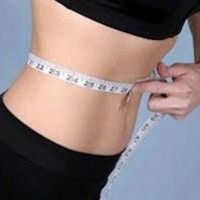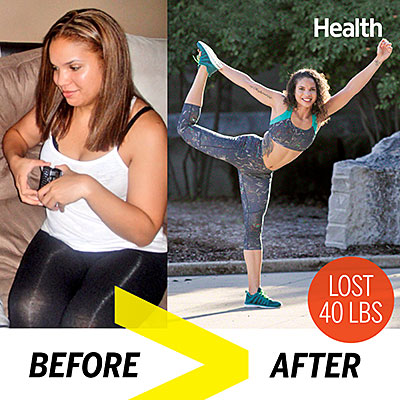Analyzing Weight Loss Diets, Part 1
The South Beach Diet was created by the cardiologist, Dr. Agatston. Originally Dr. Agatston created the South Beach Diet for his heart patients. His aim was to improve the patient's heart health while helping the patient to lose significant amounts of weight. Dr. Agatston states the South Beach Diet is not a low fat or low carb diet but focuses more on the right kinds of fats and carbs. The South Beach Diet is based on the Glycemic Index. The South Beach Diet also encourages the incorporation of healthy fats from monounsaturated sources like olive oil.
What is the Glycemic Index? Carbohydrates are ranked on a numerical index, the Glycemic Index, which is based on the carbohydrates rate of glycemic response. Each carbohydrate is scaled between 0-100 on the Glycemic Index. Carbohydrates with a higher value on the Glycemic Index create a rapid rise in blood sugar. Glucose is used as a reference point on the Glycemic Index scale, with a value of 100.
What is the difference between the South Beach Diet and the Atkins Diet? The difference between these two diets is the type of fat. The South Beach Diet recommends a diet low in saturated fats while emphasizing the monounsaturated fat. The South Beach Diet does not look at the grams of a carb but more so the sugars within the carb. The Atkins diet looks at carb grams instead of carb sugars.
How does the South Beach Diet work? The South Beach Diet is divided into three phases. Phase I involves the restriction of most carbohydrates. In theory, Phase I allows the body time to resolve any insulin resistance. This phase is to be followed for 14 days. Foods that are banned during this time period include sweets, cake, biscuits, ice cream, sugar, alcohol, pasta, fruit, milk, rice, bread, and potatoes. You are allowed low GI vegetables like cabbage and broccoli during this phase but your focus will be on eating meats that are lean (chicken, fish), eggs, low-fat cheese, olive oil, and some nuts.
Phase II requires the reintroduction of low Glycemic Index carbohydrates that include granary bread, wholegrain cereals, pasta, low fat milk, and most fruits. You are to follow Phase II of the South Beach Diet until you reach your ideal weight. Phase III allows the reintroduction of a wide variety of foods aimed at keeping your weight maintained.
What are the pros of the South Beach Diet? The South Beach Diet requires no limit on portion sizes. You are allowed to eat until you satisfy your appetite. This diet encourages you to eat three meals a day with snacks. This diet recommends replacing saturated fats with foods that contain monounsaturated fats which makes the South Beach Diet heart healthy. Also, the South Beach Diet requires you to decrease consumption of carbohydrate rich foods that are highly processed and contain few nutrients.
What are the cons of the South Beach Diet? Phase I of the South Beach Diet requires serious willpower because of the carbohydrate restriction. During this time, you may feel weak and tired as the body adjusts to the change in your diet. Also during this time you will not be eating the required amount of fruits and vegetables causing you to lack essential vitamins and minerals that are found in fruits and vegetables. A few carbohydrate rich foods contain good sources of fiber, vitamins, and minerals which you will also be lacking at this time.
Following a diet based on the Glycemic Index will help you lose weight. During Phase I, you are expected a weight loss level of around 8-13 pounds. Extreme weight loss is not healthy for the body, while 1-2 pounds of weight loss per week is more reasonable and healthier for the body. However, not all foods with a high GI should be excluded. The Glycemic Index of a meal can change considerably when certain foods are consumed together. A diet that contains monounsaturated fats instead of saturated fats is conducive for heart health. Expelling processed carbohydrates from one's diet is also beneficial for good health.
Choosing a diet that is right for you is very difficult. The diet that you choose should be a diet that you can consider following for the rest of your life, if you plan to maintain your weight loss. If you choose to follow the South Beach Diet, you should incorporate a great liquid vitamin supplement to bridge the nutritional gap. You need to realize that weight loss can be achieved without following a fad diet. A diet that is well planned with whole grains, fruits, vegetables, healthy fats, low fat milk, and lean meats along with regular exercise will go further in health than any fad diet.
Copyright 2006 Kristy Haugen
Related Articles
-
7 Healthy Low Calorie Snack Foods For Weight Loss
Losing weight means you have to exercise more or eat less, or a combin
-
Clenbuterol – How it Works, Revealing the Secrets
Clenbuterol is a drug which is gaining huge popularity in the world
-
Little Known Weight Loss Strategies
With all those holiday celebrations, did you gain a little weight that
-
Best Diet for Weight Loss - One Size Fits All?
Just what is the best diet for weight loss?Chances are that the topic
-
Geeting Started With A Weight Loss Program Is Easy
A lot of people want to lose weight. The impression we have is that we
-
Having A Busy Schedule And Dieting
When it comes to dieting many of us find that the number one hindrance
- DON'T MISS
- Overweight Teenagers - Here Are Some Weight Loss Tips
- The Diet Industry
- What Is Atkins Induction
- HCG Diet Drops Dieting
- Finding the Best Weight Loss Programs for Your Needs
- Fat Burning Furnace System
- Discussion about HCG Diet Side Effects
- The Best Way to Lose the Belly Fat Permanently
- Close Kept Secrets to Weight Loss Lesson #24
- Cheat Your Way Thin Pdf-Cheat Your Way Thin Review




